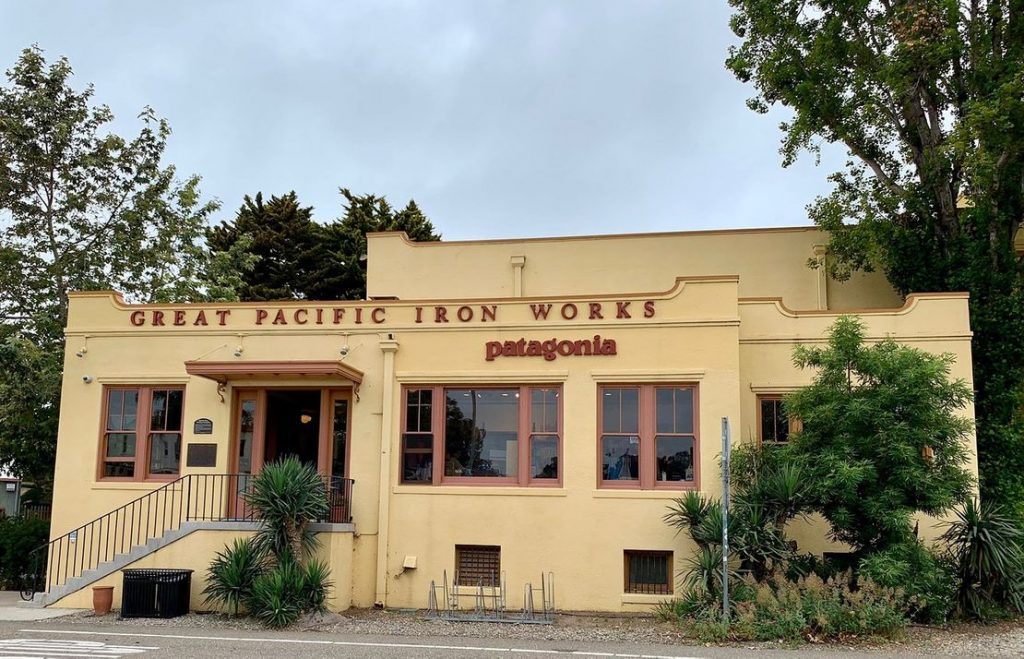As trends appear in the fashion industry, Patagonia continues to strive as one of the leading companies based on its eco-friendly apparel.
From its clean and greener apparel to its innovative flare. The fashion company maintains its commitment by producing in a sustainable way, while fighting environmental issues.
Learn about the company’s story and how it grew to become what it’s today: a company 100% dedicated to saving the Earth!
Patagonia’s Backstory: Yvon Chouinard
In Lisbon, Maine, on November 9, 1938, the future founder of Patagonia was born. Yvon Chouinard would then, at 14 years old, join a falconry club.
It was in the 1950s, when Chouinard joined the Southern California Falconry Club. Back then, he developed the passion that would later become the driving force of his life: rock climbing.
At age 18, he learned to manufacture and create his own climbing equipment. And, soon grew into a small backyard business in his parents’ house.
Like some successful entrepreneurs, Chouinard also faced certain difficulties. In his case, he grew up in a humble French-Canadian family in the United States in the 1940s, experiencing hardships and escapes that would end up contributing to his entire career (as well as shaping his personality) and impacting generations.
That said, Chouinard never aspired to venture into entrepreneurship, but his drive and his desire for exploration and adventure led him to create a career that suited his lifestyle.
In 1957, Chouinard started making his very own pitons with a passion for the outdoors. Chouinard would eventually name his first startup business, “Chouinard Equipments.” The startup would contribute to his living while he continued to do his passion – rock climbing.
While in Scotland in 1970, Chouinard started wearing Umbro Rugby shirts. Wearing these shirts, he noticed the tough construction and protective collar neck that the shirts provide.
Years later, Chouinard started selling accessories and apparel, including Rugby shirts that he had found on his Scotland trip! A few years later, ‘Patagonia’ was born.
The apparel brand for outdoors soon began to reflect environmentally friendly Yvon, through its eco-friendly materials. Patagonia climbed- no pun intended, to success for its environmentally friendly clothing.
From the expansion decision to the addition of apparel to the company’s catalog
In the same way that it is suggested that companies look for candidates who fit the company’s culture, that is, the same happens for those when looking for a partner. And, this fit is even better if that person shares the same passion you have for the product, service, industry, sector, etc.
In Chouinard’s case, when he was ready to expand his business, he took his business proposal to his friend, fellow mountaineer Tom Frost.
Together they created Chouinard Equipment and began to set precedents for the entire outdoor industry. Combining passion and education, in addition to an obsession with details, the two began to focus heavily on improving the quality and function of their products. In other words, the so-called product-led growth methodology.
In fact, many say that Chouinard and Frost were ahead of their time in their prized attention to detail and product quality.
Today, it is perhaps not so surprising to learn that this was one of the main factors that led the company to the top of the industry. After all, focusing on product improvement means, most of the time, that you are listening to the customer and, consequently, focusing on offering the best customer experience possible.
Product development & marketing
In 1972, in its first catalog, Chouinard Equipment would mark the beginning of the tone that the Patagonia brand would adopt in the coming years.
Considered the first of its kind, the climbing equipment catalog fought for the planet and demanded ethical products that wouldn’t damage the mountains – as others had already done. The catalog was filled with inspirational quotes and thought-provoking information while promoting the climbing equipment sold by Chouinard Equipment.
The marketing strategy worked better than expected: sales increased and demand was becoming more difficult to meet. That said, an interesting point of this period is not the numbers achieved in sales, but the influence that this educational approach had on its consumers.
The brand’s message reached and resonated extremely effectively with the mountaineering community, with many of its “members” declaring that passages written in the catalog symbolized turning points in their climbing journey.
As the outdoor gear industry began to boom in the 1970s, Chouinard recognized an opportunity for expansion and so began the company’s experimentation in apparel.
However, Tom Frost was not bought by the idea. The disagreement over the company’s future eventually led to the dissolution of the partnership between Frost & Chouinard and Chouinard began to take the company where he thought it should go.
The Great Pacific Iron Works

In the same year, inspired by the movie “Mountains of Storms. Released in 1968, it shows the journey of five friends who pile into an old van somewhere in California. They surf, ski, and climb their way south toward the then still-mythical land of Patagonia, where they put up the first ascent of Cerro Fitz Roy’s Southwest Buttress, the so-called “California Route.”
According to Patagonia’s official website, besides providing the inspiration for the journey documented in Mountain of Storms, in 1973 Chouinard Equipment chose the name “Patagonia” for its new clothing line.
Every year, Patagonia has released new styles of outdoor fashion pieces to be sold at the Great Pacific Iron Works. At the same frequency, the company had a multi-million sales increase, topping $5 million a year by the time the company merged with Chouinard Equipment in 1982.
After the merger of the three companies (Patagonia, Chouinard Equipment and Great Pacific Iron Works), the outdoor equipment giant continued to support its missions of “clean climbing,” sustainability and environmental protection.
For the rest of the decade, product design innovation and increased sales would inspire major changes for the future of Chouinard Equipment and Patagonia.
Green Spark
Patagonia’s clothing aims for clean materials thus, the apparel brand marks its clothing on the higher end. The use of recycling lowers emissions.
During this season, the brand alone has used 94% of its lines out of recycled materials. In fact, the company makes sure to invest in regenerative organic and bring innovative technologies to their production process.
Patagonia’s popularity surrounds its efforts for cleaner and more sustainable apparel while raising awareness of climate change and environmental concerns. As a certified B Corp, Patagonia has met or exceeded stringent criteria consistently earning the same “outstanding” score in each of the last five years.
Considered the world’s most sustainable brand, Patagonia hasn’t measured its efforts to fight climate change and promote transparency.
Patagonia: A Rise on Innovation
Patagonia’s team easily captures eco-friendly and needed materials for the market. The company uses recycled materials in-house and monitors the market for advanced new materials.
Patagonia is easily recognized as the leading brand of innovative technology! The company has developed ways to help its consumers to save money and the environment.
Patagonia’s innovative team looks for fabrics for the future. Through heavy research and dedication, the team focuses on using these fabrics in their clothing.
United Nations Champion
In September 2019, Patagonia was titled, “UN Champion of The Earth.” This award was given to Patagonia for its commitment to sustainability and its values.
Patagonia was given the award for its business model and its commitment. It is worth noting that the recognition was under the ‘entrepreneurial vision’ category.
Patagonia Continues
In September 2020, Patagonia named Ryan Gellert as the new CEO of the company. With love towards social and environmental activism, Gellert had since made Patagonia rise once again after the previous CEO of the company had abruptly left.
Gellert helped Patagonia get back on track after dealing with the pandemics’ sudden closures.
Despite changing leadership and CEO, in 2020. Patagonia’s owner Yvon Chouinard recently decided to transfer his family’s ownership to a ‘trust’ and non-profit organization.
The trust is called, “Patagonia Purpose Trust ” ensuring that the company’s values are protected. Non-voting stocks, in this case, will be given to a nonprofit organization to fight the environmental crisis.
Patagonia continues its path toward green earth, but, now, even stronger!
Changes don’t rely on eco-friendly speech
Yvon Chouinard, from a rock climber to a successful founder has created a brand that remains true to its values. With trends on the rise and the environment being a key factor for fashion, Patagonia fits into a greener picture.
At the end of last month, Patagonia came back to the top headlines in fashion and sustainability media outlets. Mr. Yvon decided to give away the company, but not without reason or out of charity. Quite the contrary: for a greater reason!
Alongside their two adult children, Mr. Chouinard and his wife, transferred their ownership of Patagonia, valued at about $3 billion, to a specially designed trust and a nonprofit organization. They were created to preserve the company’s independence and ensure that all of its profits — some $100 million a year — are used to combat climate change and protect undeveloped land around the globe.
Once again swimming against the current and criticizing the current capitalist system, the decision treated big businessmen and C-levels with kid gloves. Especially those who claim to contribute to saving the planet, but their actions don’t leave the speech sphere.
“Hopefully this will influence a new form of capitalism that doesn’t end up with a few rich people and a bunch of poor people,” said Mr. Chouinard, 83, in an exclusive interview with The New York Times. “We are going to give away the maximum amount of money to people who are actively working on saving this planet.”
What changes?
The company will continue to be a for-profit brand, based in Ventura, California. They’ll also continue to sell hundreds of jackets and outdoor equipment worldwide. The change, however, relies on the company’s share.
The Chouinard family transferred all the company’s voting stock, equivalent to 2 percent of the overall shares, into the Patagonia Purpose Trust.
The other 98 percent of the brand, its common shares, also won a destination. The family donated it to the Holdfast Collective. The newly established nonprofit organization will now be the recipient of all the company’s profits. They’ll use these funds to combat climate change.
According to The New York Times, “the trust, which will be overseen by members of the family and their closest advisers, is intended to ensure that Patagonia makes good on its commitment to run a socially responsible business and give away its profits.”
So, at the end of the day, the quality, the products and, what’s most, the company’s goal is not changing – at all.
Read our how-to guide to help you be more sustainable in your daily routine.






